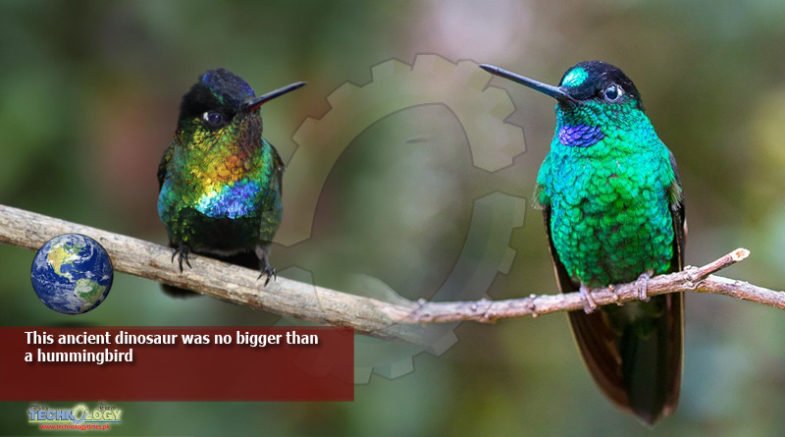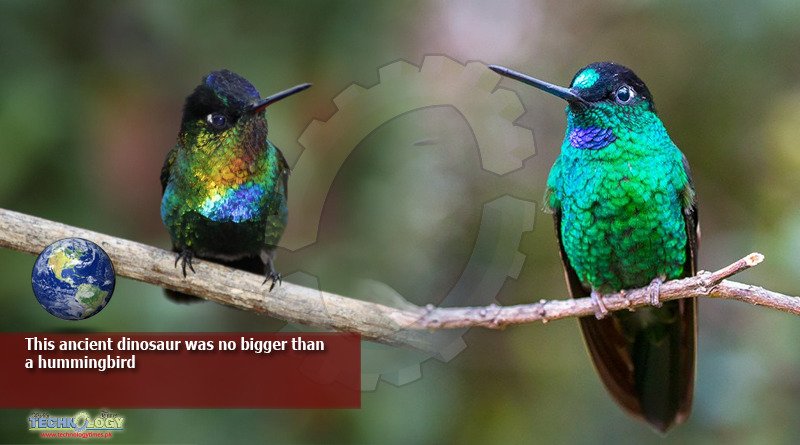A tiny, toothed bird that lived 99 million years ago appears to be the smallest known Mesozoic dinosaur, an era from about 252 million to 66 million years ago. The creature’s 12-millimeter-long skull was found encased in a chunk of amber originally discovered in northern Myanmar, researchers report March 11 in Nature.

Of modern birds — the only dinosaurs still living today — the bee hummingbird is the smallest. The new species, dubbed Oculudentavis khaungraae, was similar in size. But three-dimensional images of the fossilized skull created with computed tomography, a type of X-ray imaging, revealed that the Mesozoic bird had little else in common with today’s nectar-sipping hummingbirds.
Instead, the images reveal a surprising number of teeth, suggesting the little bird was a predator, the researchers report. “It had more teeth than any other Mesozoic bird, regardless of size,” says paleontologist Jingmai O’Connor at the Institute of Vertebrate Paleontology and Paleoanthropology in Beijing. As for its prey, researchers can only guess, she adds. O. khaungraae probably dined on arthropods and invertebrates, and possibly even small fish.
The ancient bird also had deep, conical eye sockets, similar to those of modern predatory birds such as owls. Those deep sockets can increase the eye’s visual ability without increasing its diameter, and suggest the ancient birds had sharp eyesight, O’Connor says. But while owls’ eyes face forward, increasing their depth perception, the eyes of the tiny bird faced out to the side.
The creature may have been the product of evolutionary miniaturization, whereby animals evolve smaller adult body sizes. There are limits to how small an animal can get. “You have all these restrictions related to trying to fit sensory organs into a small body size,” O’Connor says.
Yet when O’Connor considered the possibility that this ancient bird species had undergone miniaturization, “a lot of really weird, inexplicable things about the specimen suddenly made sense,” she says. Oddities including the bird’s strangely fused teeth and the pattern of fusion in its skull “can be explained by miniaturization.”
Headlines and summaries of the latest Science News articles, delivered to your inboxE-mail*GO
The miniaturization may be related to island dwarfism, in which larger animals evolve to smaller body sizes over many generations because their ranges are strictly limited, such as on an island (SN: 4/10/19). Anecdotal evidence suggests that the chunk of amber containing the bird skull may have come from a region in Myanmar that millions of years ago was part of an island chain.
Although it’s just one fossil, the find can shed light on evolutionary changes to smaller body size, says Roger Benson, a paleontologist at the University of Oxford who wrote a separate commentary about the discovery published in the same issue of Nature. The earliest birds, such as Archaeopteryx, arose around 150 million years ago (SN: 3/13/18), and this find suggests that bird body sizes were reaching their lower limit by 99 million years ago, he says.
But to truly understand the evolutionary significance of O. khaungraae, researchers will need to figure out where exactly the new species belongs on the tree of life. And that’s difficult, given the bird’s bizarre features, O’Connor says. “It’s just a skull. There’s a lot you can’t say,” she says. “Who knows what new [fossils] might tell us.”
Courtsy: Refferal link
